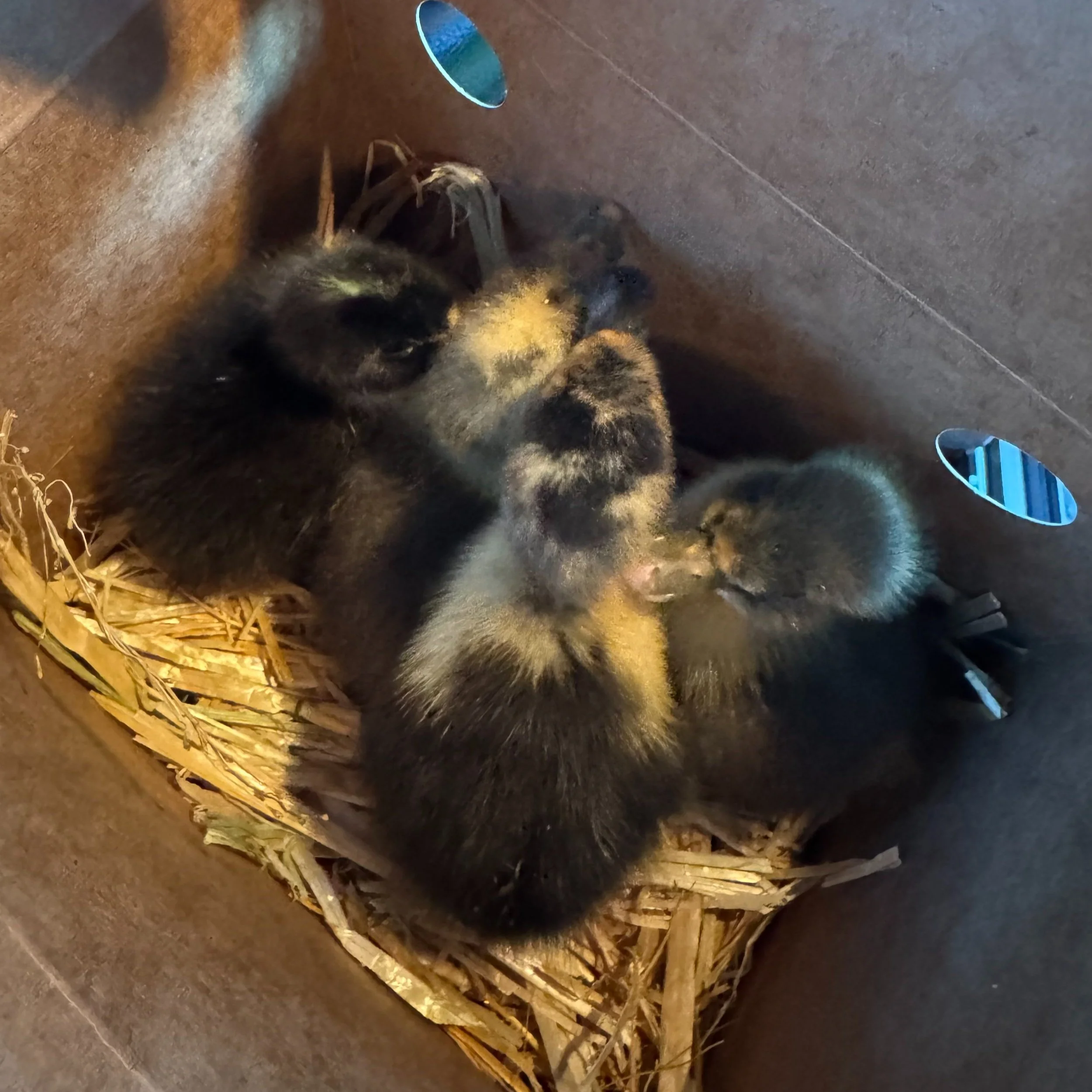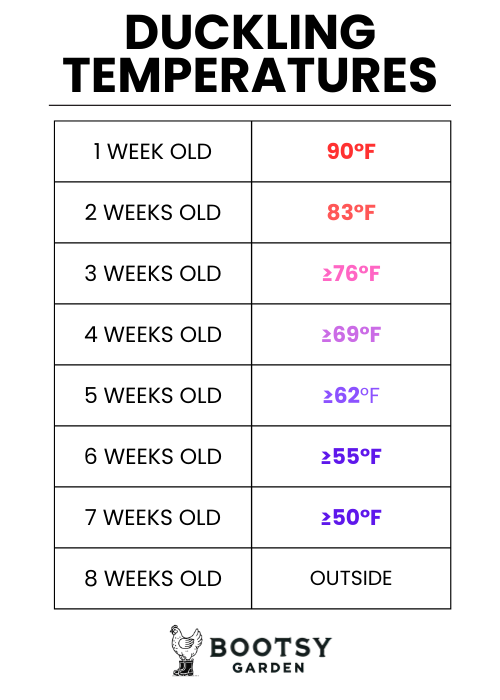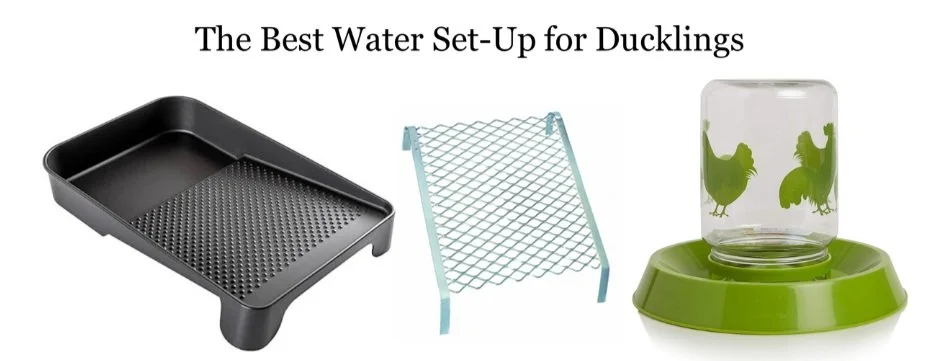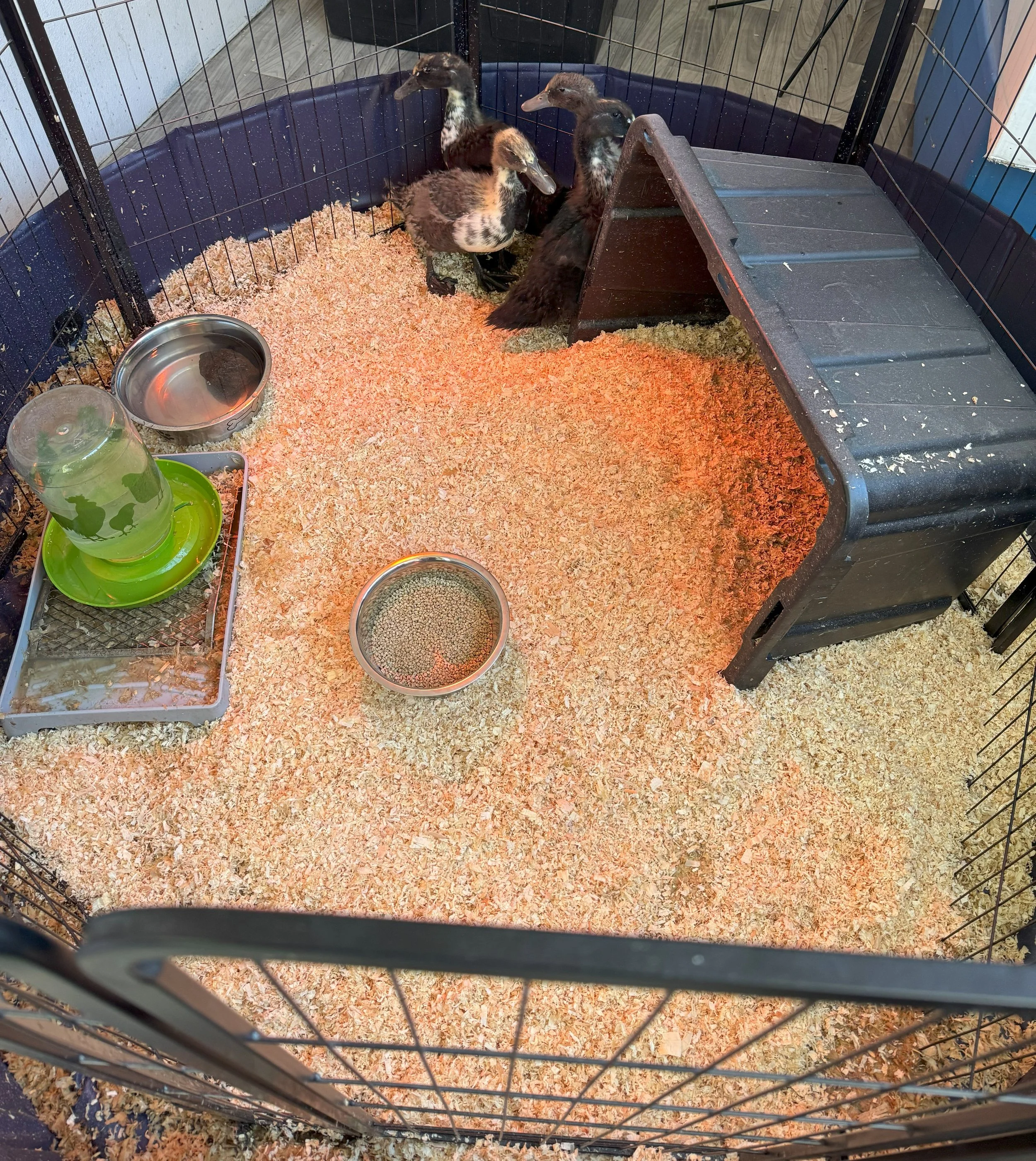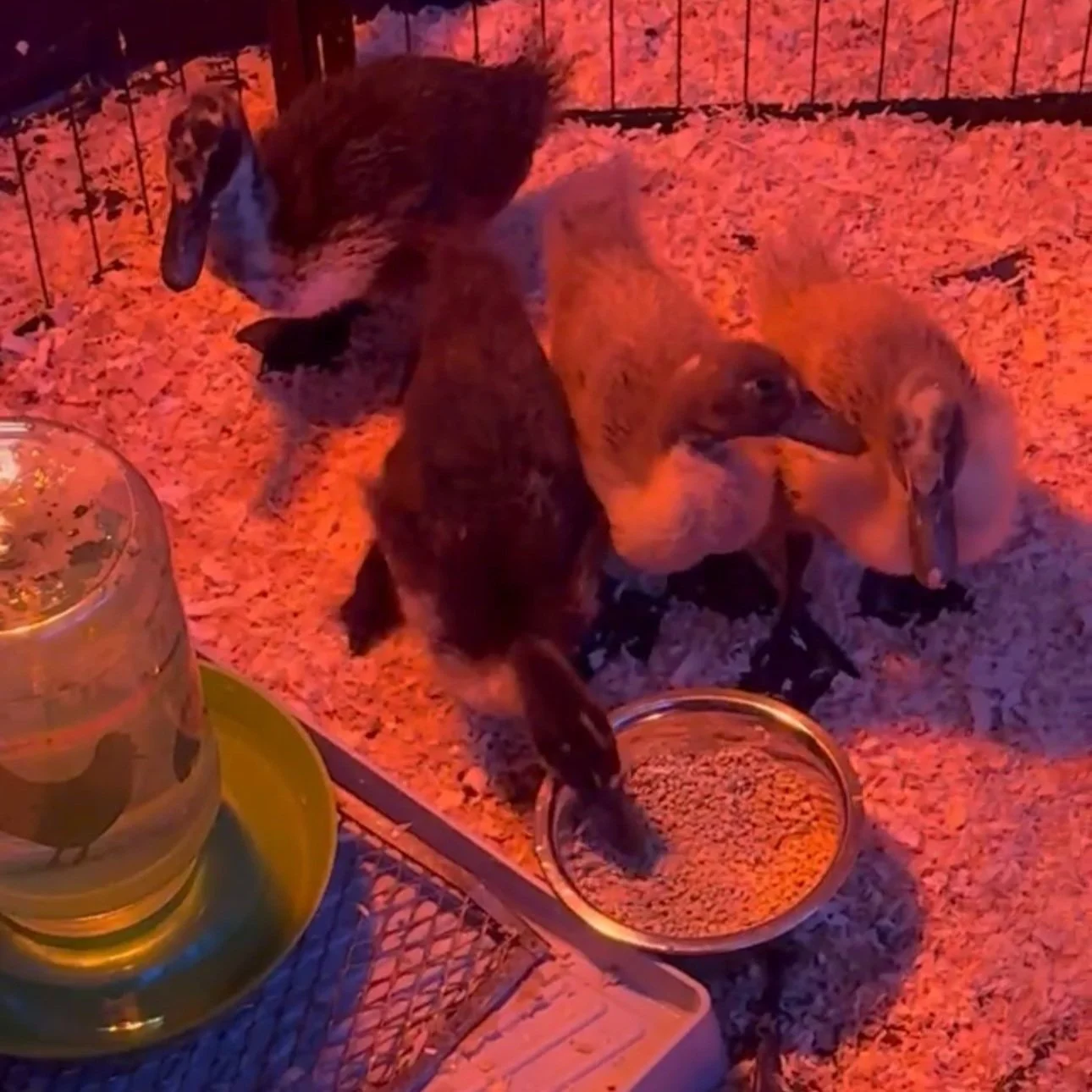Raising Ducklings 101: What You Need to Know
Bringing home ducklings is an exciting experience, but if you're new to raising them, you might be surprised by how quickly they grow and the setup they require! Unlike chickens, ducklings have unique needs that you’ll want to be prepared for from day one. Here’s what you need to know to successfully raise happy, healthy ducklings.
Brooder Setup: Bigger Is Better
Ducklings grow FAST. For the first week to two weeks, ducklings will need a smaller secured enclosure with access to heat, water, and food 24.7. During the first two weeks we do the following:
Brooder Container: I swear by the 40-gallon black and yellow totes from Home Depot. They’re spacious, sturdy, and a breeze to clean.
Bedding: Pine shavings are my go-to for bedding; they keep the brooder dry and are easy to change out. I sprinkle barn lime and diatomaceous earth to keep things extra fresh and pest-free. We recommend Eco Flake pine shavings, which is linked here. Ducklings will STINK and you will have to change their bedding every day to keep the smell down. I promise as they get older and you move them into a larger enclosure, they will smell less bad.
Temperature Control: Getting the temperature right is crucial. I use a digital thermometer to keep things exact. Start at 90°F in the first week and decrease by 7°F each week. I’ve found that a reliable heat lamp and bulbs can make all the difference. We also recommend you use a hot brooder plate (we love the one that is linked here) for very young ducklings to get under to keep warm.
By 2-3 weeks old, they’ll need a large area that can still be heated as they transition from a small brooder to a grow-out space. A hex pen, like this one, is a great option for giving them plenty of room while keeping them contained. Keep reading to learn how we care for our ducklings once they’re three weeks old.
Water: The Most Important Element
Ducks and water go hand in hand, and when it comes to raising ducklings, ensuring proper water access is crucial. Ducklings must always have access to clean water, and their beaks must be able to fully submerge in it whenever they eat. To manage their messy drinking habits, we’ve had success using a paint roller tray with a roller screen over it to minimize splashing. We also use a large chicken waterer, which works well as long as you find one that’s deep enough for them to dip their entire beak to their nostrils.
Another great method of providing water to ducklings is to get a large stainless steel dog bowl with a diameter of at least 8 inches and put one large rock or multiple small rocks in the bottom to weigh it down, then fill it with water. Your ducklings will love this, and it prevents them from tipping the entire bowl.
Feeding and Nutrition
When raising ducklings they should be fed a non-medicated chick starter or a dedicated waterfowl feed with extra niacin to support their rapid growth. We prefer the Manna Pro Duck Starter Grower Crumble Non-Medicated Feed for Young Ducks. Our ducklings have always done well on this feed. If you’re using chick starters, adding brewer’s yeast to their food helps meet their niacin needs. Ducks grow incredibly fast, so proper nutrition is key to preventing leg issues and other health concerns.
Transitioning to a Grow-Out Pen
By the time ducklings are 3 weeks old, they’ll need a larger, secure space with access to heat. We’ve been using a 71-inch foldable dog pool with a hex pen set inside as a grow-out pen, and it’s worked really well. It gives them plenty of room to move around while keeping them safely contained. We got the 71-inch, but we could have gone much smaller, like the 48-inch.
Almost ready to move into their duck house!
Duckling Health Basics
Keeping a close eye on your ducklings’ health is just as important as providing the right setup. One common concern is when a duckling seems smaller or isn’t growing as quickly as the others. This is often related to gut health. Because ducklings rely heavily on good digestion to absorb nutrients, an imbalance in their gut can slow their development. In these cases, adding a probiotic supplement to their water or feed can help support a healthy digestive system and encourage proper growth. Look for probiotics formulated for poultry or waterfowl, and follow dosage recommendations carefully.
Another issue to watch for is overheating. If you notice your ducklings panting, holding their wings away from their bodies, or stretching their legs out behind them, it’s a sign that they’re too hot. Unlike chicks, ducklings are more sensitive to heat and can quickly become stressed if their brooder is too warm. Make sure there’s enough space in the brooder for them to move away from the heat source if needed, and monitor the temperature closely. A thermometer at duckling level is super helpful here — aim for around 90°F during the first week, then drop it by about 7°F each week as they grow and feather out.
Keeping your ducklings healthy comes down to observation and quick adjustments. The earlier you catch any signs of trouble, the easier it is to correct and keep your little flock thriving.
Keep it Clean
Ducklings are adorable, but they are messy. Be prepared to clean their water multiple times a day and refresh their bedding often. Pine shavings work well, but straw or hay can also be used. Keeping their brooder dry helps prevent health issues like splay leg and bacterial infections.
Raising ducklings is incredibly rewarding, but preparation is key! Ensure you have the right setup, provide plenty of fresh water, and be ready to upgrade your space as you grow. With the right care, your ducklings will thrive and soon be ready to enjoy free-ranging and splashing around your homestead.
Are you raising ducklings this year? Share your experiences and favorite duck-raising tips in the comments!
This post contains affiliate links. If you purchase through them, I may earn a small commission at no extra cost to you. Thank you for your support!

